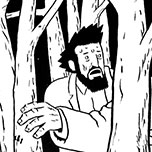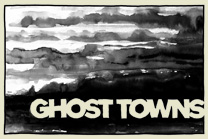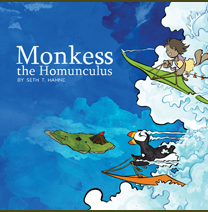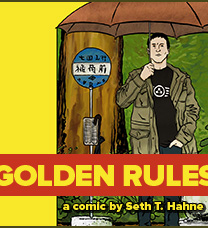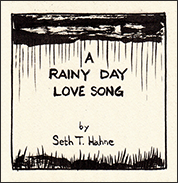Louis Riel
Biography is always a tricky thing to pull off well. Ignoring the matter of interpretation, the biographer still has to grapple with the reality that there are not really any such things as brute facts. The biographer is never simply representing What Happened, but instead puts forth a version of what happened—a story that conforms more or less plausibly with the ultimately unknowable way history actually spun itself out. In my response to Christopher Frayling’s biography of Sergio Leone, I wrote:
Oh, certainly in the abstract sense, there could exist some ultimate record of events free from the colouring of memory, vanity, or nostalgia, but that would require an impartial, omniscient observer. And biographers, even if they had access to such an impossible (barring the metanatural) source, probably wouldn’t wish to make use of it for fear of losing some of the more outrageous possibilities in the unveiling of their respective subjects.
See, the thing of it is: biographers are every bit as much storytellers as Dickens or Gaiman or Hemmingway or Stoppard. They not only have a responsibility to the historical record, but perhaps more importantly, they are beholden to the attentions of their readers. The occupation of a straight fictionalist almost must be easier—for the simple novelist may take a story in any direction and pace it in a manner that will drive readers to continue until story’s end. The biographer, on the other hand, is more like a film editor who has to craft a compelling story with found material he had no hand in creating. So it’s understandable that biographers might take some license with the truth.
As if truth and history even belong in the same sentence.
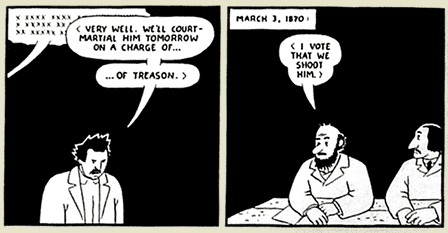
Chester Brown, as he unfurls the history of Manitoba’s founding rascal-hero, carefully chooses which directions to have Riel’s story take and which paths the man should tread. Often in his research Brown is confronted with conflicting reports, some from recollections published well and many years after any of the involved incidents. As interesting as Riel’s decisions and circumstances are, it may be still more fascinating to chart Brown’s own choices as to which of these to portray—and how.
To this end, Brown supplies the reader with a gratifying section of endnotes, in which he is allowed to explore questions that his straightforward narrative is unable to ask. He will often use this as an opportunity to show how the history he presents is an amalgamation of reports conflated again with fictionalization to help the story spring to life. As an example, Brown shows a scene in which historical figure Thomas Scott and several others beat a Canadian aboriginal named Parisien. Scott, in the scene, is unhinged and savagely hacks away at Parisien’s head until he is dead. Brown, in his endnotes, discusses the seemingly straightforward scene:
During the beating of Parisien, “Thomas Scott was particularly vicious; he struck Parisien on the head with an axe,” Siggens, p. 154). Still, my depiction probably exaggerates Scott’s viciousness. I don’t know whether his axe hit Parisien once or many times. The way I’ve written the scene virtually implies that Scott alone killed Parisien, and in reality it’s likely that the murder was more of a group effort. Neither Sutherland [another casualty] nor Parisien died immediately. Parisien lingered “a few days” (Howard, p. 159), “several weeks” (Bumsted, p. 153), or “a month and a half” (Siggens, p. 154) before expiring. (Stanley (p. 106) agrees with Howard, while Siggins is corroborated by Charlebois (p. 64), who gives Parisien’s date of death as April 4th [Brown in this book has Parisien die on February 16th].
This is just one example among over a hundred. So Brown is forthright about his biographer’s role in the fabrication of Riel’s historical record—and really, that just makes the work that much more intriguing. Knowing that the author is not bound overly by, quote-unquote, historical fact draws more attention to Brown’s skill as a storyteller. He is unshackled enough that he can tell the story he is going to tell in the way he wishes to tell it. And while there is certainly some subjectivity at work, I can say that at least from my reader’s perch, Louis Riel is an unqualified success.
With its abrupt and overly simplified style, Louis Riel is able to present Riel’s story in a way impossible for a prose novel. Visual space is used to create story beats, punctuating decisions or underscoring the humour in a given situation. Entire conversations, discussions, and arguments occur over two or three panels, with dialogue as spare as Brown’s art. The pacing and storytelling is excellent throughout. Brown attributes the drawing style he employs across the book to his love for Harold Gray’s Little Orphan Annie. Hollow, pupil-less eyes float detached in wide-open faces. Brown’s rendering of these historical figures is iconic and indelible.
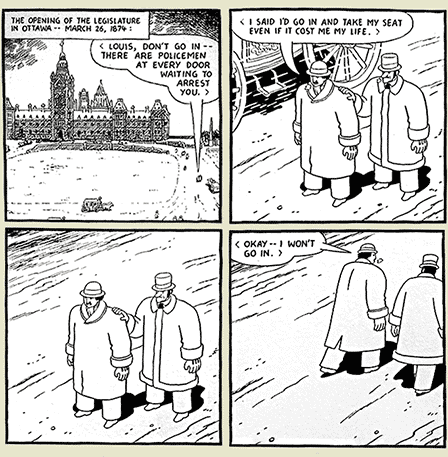
Louis Riel explores the founding of Manitoba, the insurrection by the French-speaking half-native, half-European settlers of Rupert’s Land against their fresh landlords, the Canadian government. Brown’s book follows the numerous twists, turns, and double-crosses that littered that historical landscape. What Brown accomplishes by hopping from one vantage to another, unbound by the usual narrative constraints is to draw out very succinctly just how amazing it was that Riel’s rebellion failed. At any number of points, the Métis people (Riel’s group) could have successfully stymied the unprepared and disorganized Canadian government, but always little details conspired against that fate. At times, Riel’s own personal conflicts (both with his given role and with his psychological state) work to thwart the Métis’ goals. More insidious, however, is the blunt scheming of the Canadian prime minister to force Riel into open rebellion for the sake of some lucrative rail contracts.
Things could have been greatly different, but that’s not the story Chester Brown chooses to tell. And his version of things might be more compelling anyway.
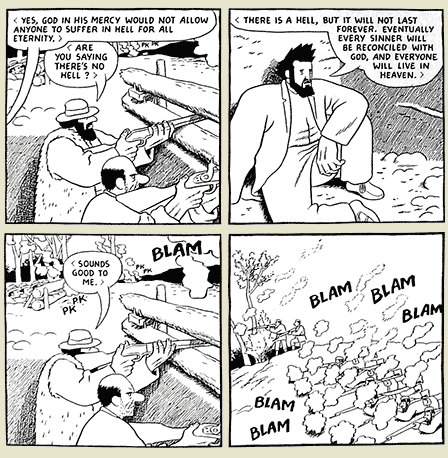
Good Ok Bad features reviews of comics, graphic novels, manga, et cetera using a rare and auspicious three-star rating system. Point systems are notoriously fiddly, so here it's been pared down to three simple possibilities:
3 Stars = Good
2 Stars = Ok
1 Star = Bad
I am Seth T. Hahne and these are my reviews.
Support me by buying my art on Etsy
Review copy submission may be facilitated via the Contact page.
Browse Reviews By
Other Features
- Popular Sections:
- All-Time Top 500
- All the Boardgames I've Played
- All the Anime Series I've Seen
- All the Animated Films I've Seen
- Top 75 by Female Creators
- Kids Recommendations
- Daily Recommendations
- What I Read: A Reading Log
- Best Books of the Year:
- Top 100 of 2020-22
- Top 75 of 2019
- Top 50 of 2018
- Top 75 of 2017
- Top 75 of 2016
- Top 75 of 2015
- Top 75 of 2014
- Top 35 of 2013
- Top 25 of 2012
- Top 10 of 2011
- Other Features:
- Why I ❤ Zita the Spacegirl
- 31 Days of Comics
- Bookclub Study Guides
- Sitemap
